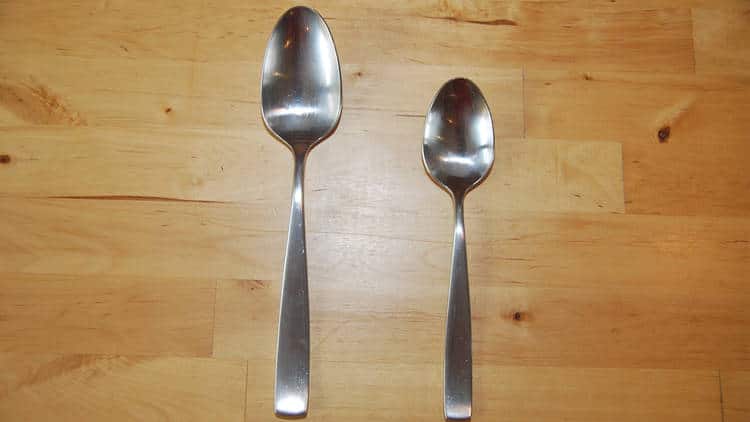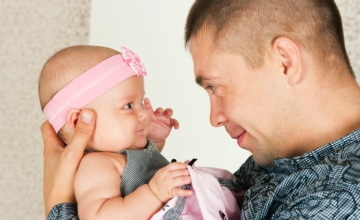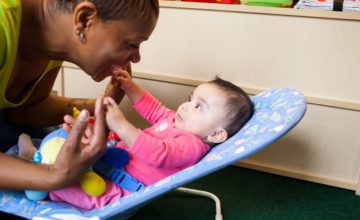Materials:
Several pairs of objects (each pair should have one big and one small version of the object), such as big and small spoons, big and small measuring cups, big and small blocks, or big and small pencils
Try It Out:
- Place a pair of spoons (one big, one small) in front of your child.
- Point to the bigger spoon and say, “This spoon is bigger than the other spoon.” Point to the smaller spoon and say, “This spoon is smaller than the other spoon.”
- Remove the spoons and place another pair of big and small objects (for example, blocks) in front of your child. Say, “Can you point to the block that is bigger?”
- If your child points to the correct block, say, “That’s right, that block is bigger.”
- If your child points to the incorrect block, you can say, “Try again.” When she points to the correct one, say, “That’s right! This block is bigger.”
- Place the other pairs of objects, one pair at a time, in front of your child. Ask your child to point out the bigger and smaller object in each pair. Encourage your child to say the words “bigger” and “smaller” and the names of the objects.
Making the Most of This Activity:
- Try the activity with more objects, such as a large ball and a small ball, or a large shoe and a small shoe.
- Use size language like big and bigger and small and smaller in everyday routines. For example, while waiting for the bus, say, “The truck is bigger than the taxi.” Or during bath time, say, “The washcloth is smaller than the towel.”
Reflect:
Was your child able to identify which object was bigger or smaller? If not, continue pointing out things that are bigger and smaller as you see them and try this activity again in a few weeks.





